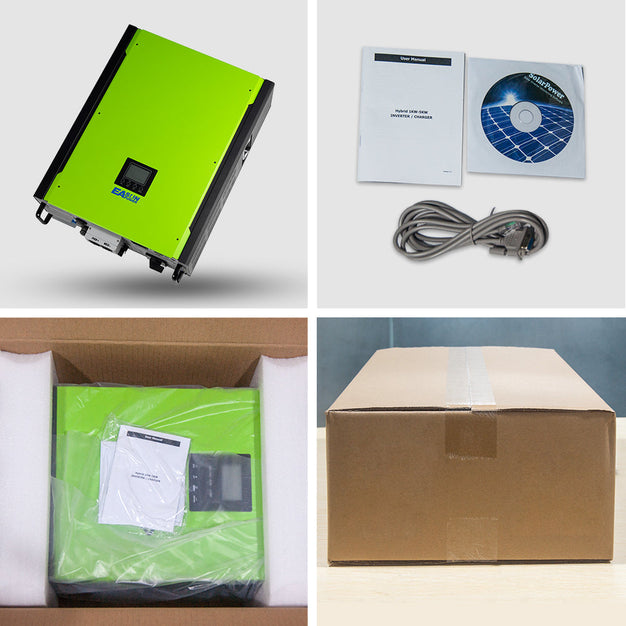Unlocking the Secrets of MPPT Technology: Transform Your Solar Power Game!
In today's world, where renewable energy sources are becoming increasingly vital, understanding the technology behind solar power systems is essential. One of the key innovations in this field is MPPT technology, or Maximum Power Point Tracking. This technology plays a crucial role in solar inverters, optimizing the energy harvested from solar panels. Grasping the principles of MPPT technology can significantly enhance the efficiency and performance of solar power systems, making it a topic worth exploring for anyone interested in solar energy. Whether you're a homeowner considering solar panels or an enthusiast eager to maximize your energy output, understanding MPPT technology can help you harness the sun's power more effectively.

Understanding MPPT Technology
MPPT, which stands for Maximum Power Point Tracking, is a sophisticated technology utilized in solar inverters to maximize the energy output from solar panels. Essentially, solar panels do not produce a constant amount of power; their output varies depending on several factors, such as sunlight intensity, temperature, and shading. MPPT technology addresses this variability by continuously adjusting the electrical operating point of the solar panels to ensure they are always operating at their maximum power point. This is achieved using specialized algorithms that analyze the voltage and current produced by the panels, enabling the inverter to optimize the energy capture dynamically. By doing so, MPPT technology ensures that solar inverters extract the maximum possible power from the solar panels, resulting in improved efficiency and energy yields.
How MPPT Works
The mechanics behind MPPT technology are fascinating and involve a combination of electrical engineering and real-time analysis. At its core, MPPT employs algorithms that constantly measure the voltage and current output of the solar panels. By calculating the power output (which is the product of voltage and current), the inverter can identify the maximum power point. As environmental conditions change, such as cloud cover or temperature fluctuations, the inverter adjusts its operating point to align with the new maximum power point. Algorithms such as Perturb and Observe (P&O) or Incremental Conductance are commonly used in this process. These algorithms allow the inverter to determine whether to increase or decrease the voltage output to maximize power production. The result is a more efficient solar energy system that can adapt to varying conditions, ensuring optimal performance throughout the day.
Benefits of MPPT Technology in Solar Inverters
The advantages of implementing MPPT technology in solar inverters are noteworthy and can significantly impact the efficiency of solar energy systems. One of the most significant benefits is the increase in energy production. By continuously optimizing power output, MPPT technology can improve energy yields by up to 30% compared to traditional inverters. This translates to more energy available for consumption or storage, making solar systems more economical in the long run. Additionally, MPPT technology enhances performance under varying conditions. Solar panels often experience changes in sunlight due to shading or atmospheric conditions, and MPPT allows the inverter to adjust rapidly to these changes, maintaining efficient energy production. Furthermore, MPPT technology contributes to better battery charging in off-grid systems, ensuring that batteries receive the maximum charge possible, thereby extending their lifespan and improving overall system performance.
Comparative Performance
When comparing MPPT technology to traditional inverter technologies, the differences in energy production and efficiency become apparent. Traditional inverters typically operate at a fixed voltage and may struggle to optimize energy output under varying environmental conditions. In contrast, MPPT technology can adapt to changes in sunlight and temperature, allowing for higher energy production even on cloudy days or during early mornings and late afternoons. This adaptability results in a more resilient solar power system capable of producing more energy throughout the day, regardless of external factors. As a friend of mine who installed solar panels recently noted, the difference in energy production during peak sun hours versus less sunny periods was significantly less pronounced with an MPPT-equipped inverter.
Maximizing Solar Efficiency with MPPT Technology
In summary, MPPT technology is a game-changer in the realm of solar power systems, offering enhanced efficiency and energy yields. By understanding how MPPT technology works and its benefits, solar energy users can make informed decisions about their systems. Whether you're considering installing solar panels or looking to upgrade your existing setup, recognizing the value of MPPT technology will help you harness the sun's energy more effectively. As the demand for renewable energy continues to grow, embracing innovations like MPPT technology will be essential for maximizing the potential of solar power.



